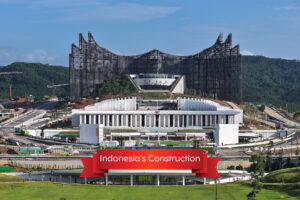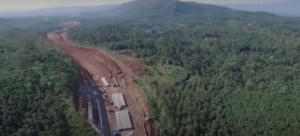
The new capital city project is currently the most ambitious infrastructure project in Indonesia. There needs to be careful planning and preparation to respond to the challenges in realizing President Joko “Jokowi” Widodo’s big agenda.
One of the existing infrastructure planning frameworks was developed by the British government is the “Five Case Model”. This is an internationally recognized project planning methodology and is supported by the World Bank and G20 countries. Within this framework, there are five dimensions “Five Cases” to focus: strategic case, economic case, commercial case, financial case, and management case.
The first aspect is the strategic case — is the project strategically necessary? For the new capital city project the government has established a strategic case quite clearly. Various factors have been considered, ranging from the critical water supply in Jakarta to the selection of locations outside Java to strengthen national unity.
Second is the economic case – is this project economically and socially desirable? For the new capital city project, in our opinion, this aspect needs to be formulated and quantified in more detail so that the design being developed can provide maximum benefits and become a best practice model for other cities in Indonesia.
The social and economic benefits include:
1) Reduction in congestion, pollution, and health risks in Jakarta by shifting government and related activities to a well-planned and sustainable new city, based on international best practice in urban planning and human-centered design.
The design should maximize the proportion of journeys which can be made on foot or by public transport, possibly including the implementation of an electronic road pricing scheme to manage traffic demand. This is a great opportunity to design and develop a truly smart city from the ground up.
2) A positive impact on sustainability across all dimensions, ranging from use of sustainable construction methods, to energy efficient design and 100 percent renewable energy usage in a “smart grid” network, to sustainable waste management. This could also reduce the economic and environmental cost of building and operating the city.
3) Creating a model inclusive society providing adequate housing, education, healthcare and work opportunities for all inhabitants, and minimizing risk of crime. It is essential that the new capital does not emulate Brasilia — a beautiful modern city center, surrounded by unplanned slums for unexpected additional residents.
4) Acting as a catalyst for the government’s plan to make the bureaucracy more agile — the design should adopt best architectural and design practice to break down silos so that different ministries could work together in a more integrated way and encourage a cultural transformation within the government, involving a change of mentality to an outcome focused collaborative model.
5) Improving the efficiency and effectiveness of government through new investment in integrated information technology and data management so that all decisions are based on reliable, consistent and up-to-date information.
Implementing e-government concepts is essential to ensure all national government services can be delivered with no increase in cost or burden on society caused by the relocation.
The new capital city project will likely require a portion of funding from the ministry budget. This can be a barrier in itself. To overcome this, all government agencies need to work closely together so that the benefits of the new capital city can be felt by the Indonesian people. For example, hospitals in the new capital can act as international standard teaching hospitals for training medical staff from all regions of Indonesia.
Returning to the “five case model”, the third aspect is the commercial case — is the project commercially viable? The fourth aspect is the financial case — is there enough funding to finance the project? These two aspects are key to realizing the economic and strategic benefits of the project.
Other countries such as the United Kingdom and Netherlands have successfully used public-private partnerships (PPPs) for delivering core government buildings such as offices, police stations and courts.
Indonesia is already seeing benefits from PPPs, through the Palapa Ring Broadband project as well as power generation, water treatment and toll road projects. Therefore, the PPP scheme can also be applied to this new capital city project.
The government will also need to pay attention to the following aspects to attract capable service providers, the necessary finance, and to ensure a viable procurement and well-structured deal that will bring benefit to all stakeholders:
1) Planning and phasing economic demand for the assets — investors need to be able to match the capacity of the new assets to the population of the city over time.
2) Competitive, transparent, bundled procurement — to ensure that the tendered contracts match the market appetite and attract a wide range of international suppliers (with local Indonesian partners).
3) International financing in hard currency — the project is too big to be financed in rupiah and the government will need to accept long term liabilities for PPP contracts denominated in US dollars.
4) Long-term value capture and prevention of speculation based on innovative and robust contractual claw back mechanisms to prevent investors making windfall property gains at public expense. Part of the cost can be funded from releasing value from government assets in Jakarta, subject to one major concern. If a large volume of government property is released onto the market at the same time, it could lead to a reduction in values and a failure to realize the necessary proceeds.
The strategy for the new capital needs to be accompanied by a strategy for the regeneration of Jakarta, to improve economic demand. Jakarta could, for example, position itself better as a destination for tourism and international events, as well as a center for healthcare and higher education.
The last aspect is the management case — can the project be delivered according to plan? This is key to make sure the benefits are realized in practice. We suggest the creation of a fully empowered new capital city authority, supported by a strong project management office, guided by a comprehensive benefits realization plan, and transparent organization and governance structures.
As in all infrastructure projects, there will undoubtedly be regulatory barriers — the city could act as a “regulatory sandbox” like Thailand’s Eastern Economic Corridor, with the ability to amend or rescind existing regulations, and lessons learned then applied nationwide.
In conclusion, we consider the government has set out an admirable and ambitious plan and now needs to follow through with best practice preparation and delivery. This good start should continue with the preparation and implementation that is based on the best practices available globally.
Kindly fill in the form below, our consultant will get in touch as soonest.
Alternatively, you can call at +62 815 629 0000 (whatsupp available) or email to info@bizindo.com



 20% off today. Whatsapp us!
20% off today. Whatsapp us!